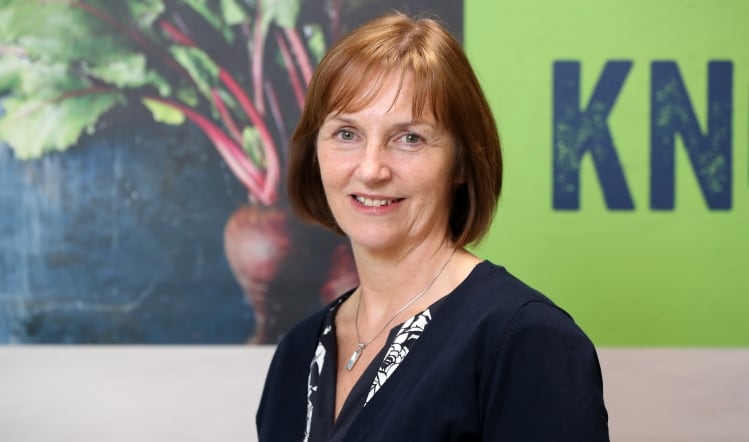When it comes to standards across the food and drink supply chain, there aren’t many players bigger than GS1.
Operating worldwide for more than 40 years, the not-for-profit standards body has 114 local member organisations and more than 1.5m user companies, with its most well-known product being its barcode.
In the food and drink industry, collaboration is the name of the game and facilitating the conversation between manufacturers and retailers is Jim Dickson, head of retail at GS1.
An industry veteran, Dickson has experienced the food and drink supply chain from the manufacturers’ and the retailers’ perspectives. For 27 years, he held a number of roles across supermarket giant Tesco’s supply chain before joining GS1, and was with United Biscuits prior to that.
“Taking that into GS1, I can sit in a room with manufacturers and retailers and understand the challenges they both face. So, in terms of facilitating the discussion, it really helps to have somebody there who understands the whole industry,” says Dickson.
Bridge
This is how GS1 has cemented itself as a bridge between suppliers and retailers, creating unified supply chain data, allowing everyone to sing from the same hymn sheet.
As Dickson explains: “We’re like the glue in the middle, making sure that, if I’m a manufacturer, there’s some consistency in the way that I trade with all of my retailers. Similarly, for the retailers, it [makes it] quite easy for them to understand the way that suppliers and manufacturers present their product to them, as their customer.”
Key to driving consistency across GS1 is its suite of products, all based around the group’s set of standards that are commonly adopted across the majority of businesses within the food and drink supply chain. If a manufacturer is trading with a retailer, it’s quite likely they have already signed up to one or more of these standards at that particular retailer’s request.
“Most larger manufacturers have dealt with GS1 for 40 years and know what we’re about,” says Dickson. “For them, there’s no real surprises when you talk to them about GS1 – they really understand the way we work and all of our standards really well.
“If you’re a smaller manufacturer just coming to the market or you’ve just started to trade with one of the big retailers, you’ve probably come to us to join as a member because the retailer said, ‘We need you to have a GS1 barcode’.”
Small and medium-sized enterprises (SMEs) might just view this as a hurdle they need to overcome to get their products on store shelves. But as Dickson explains, it’s about making sure that all products on the market are traceable and authentic. Understanding where the product comes from and knowing it complies with an agreed set of standards prevents any descent into a ‘Wild West’ scenario, he says.
New avenues
Moreover, with that barcode on their products, manufacturers are introduced to a world of new possibilities that extend far beyond the obligation to be registered with GS1 just to get their products listed with one retailer. With their data added to the catalogue, other retailers are free to browse their products whenever they like, opening up new avenues for business.
“If I’m Ocado and I want to look for water in glass bottles, the work that we’re [GS1] doing ensures that it’s going to be quite easy for the retailer to search for glass-bottled water in our catalogue,” Dickson adds.
Manufacturers looking to export their goods get another added benefit from their barcode. Being a global company, GS1’s standards are recognised worldwide, making trade with foreign retailers much easier to facilitate – a helping hand in negotiations when, or if, Brexit finally happens, as Dickson points out. All GS1 members can access that catalogue of products and instantly see they comply to a strict set of standards.
“Brexit is a really good opportunity to showcase where we can help any size of business work through some of those potential changes around the border, because the fundamental thing you need to do is to be able to identify that product and we are well placed to do that,” Dickson continues. Through GS1’s set of standards, product information such as allergens and sugar content are consistent, no matter where in the world they are being applied.
“When you start to talk to a retailer in Asia and you share with them the work you’ve been doing with GS1, they’ll understand the way your products are created, making it quite easy for them to run your product in their stores.”
The role of blockchain
Always eager to provide the most comprehensive supply chain and standards systems possible, one piece of traceability technology GS1 has kept its eye on is blockchain.
Lauded by many as the next big thing in the food and drink supply chain, Dickson is cautiously optimistic about the technology. Rather than diving headfirst into using it, however, GS1 is looking into how it can package the system in a way that is easy to understand and benefits the entire industry.
“Essentially, what we’ll try to do is work with industry on how we put some kind of wrapper around blockchain and introduce some standards, so there’s consistency in the way that people use it,” he explains.
Any decision on whether or not to adopt blockchain technology is dependent on the impact it would have on GS1’s SME affiliates, which make up a large percentage of the group’s membership. A system that might work for the larger players in the industry, for example, won’t necessarily work for smaller suppliers.
“We’re very aware that there are some pilots [on blockchain] going on in the food industry, but where we can help is by ensuring we’re all talking the same language around the technology and that the consistency is there.”
Jim Dickson
Job title: Head of retail at GS1
Age: 56
CV: Dickson started his career in the supply chain at United Biscuits in its transport department. As opportunities within supply began to decline, he moved to Tesco, where he spent 26 years and held a number of roles with the retailer across Europe. Dickson joined GS1 in 2016 and was made head of retail in 2017.
Domestics: Two children aged 8 and 12, previously married.
Hobbies and interests: A keen sportsman, Dickson has an interest in mountain biking, skiing and hiking holidays. “Because of my children I’m pretty much an outdoors kind of person.”





